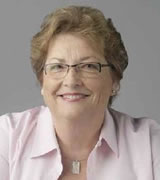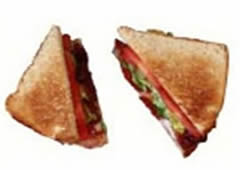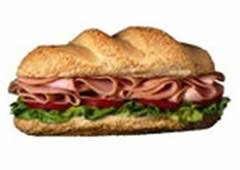| BlueSky Business Aviation News | ||||||||||||||||||||||||
| . | ||||||||||||||||||||||||
Why is there so much talk everywhere about the rise in obesity? Who’s to blame? Is it the food? Is it Processed vs. Fresh: Quantity vs. Price? Could the answer be that many of us exercise less, or it is just the lifestyle we lead? Perhaps larger portioning is a sign of past times and we’re all changing our desires as we become more influenced by the new generation? This generation is our future and their wish for healthier, lighter meals with more choices – such as vegetarian and vegan options – together with smaller portions and fresh local produce is our responsibility to offer, as catering sources. Are the aviation food portions to blame for weight gain, or is it your irregular hours and eating patterns? Well, I couldn’t help but give this some thought as I look at myself and wonder why I can gain weight when I have a kitchen full of chefs who can prepare any diet meal I may conjure up in my mind to help me lose it. For me, I know the problem is that I just can’t resist the delicious smells waffling from the sauté pans, and the bakery ovens. Oh yes, I’m weak and I know it! And, I will never say no to sampling anything new created in my kitchen or some new flavor profile I see or smell as I travel. The CDC (Center for Disease Control) states that portion sizes have increased almost 400% in the last 60 years. That is 4 times more food per serving. I found this example of the growth of portion size over the last 20 years and I thought you might enjoy seeing it. I was amazed . . .
So why is it that we serve larger portions in aviation? I will take you back to the past; the golden years of aviation catering some may remember. As aviation catering developed into an industry of its own, many of us were ‘social event’ caterers, or ‘office caterers’ and some maybe even ‘picnic caterers’. The flight attendant sought us out as well as restaurants to meet the needs of their passengers and flight crew. The biggest problem back in the golden era was the ease with which passengers invited friends and associates to hop on their flight and ride with them rather than traveling commercial. The passenger count could vary minutes before wheels up, thus creating the problem of not enough food to go around. At this point many of us in the industry increased our aviation portions to accommodate the unknown. I used to call it the ‘just in case’ factor, or the Boy Scout method of ‘always being prepared’. Food was a big part of the flight. Those portions remained large until quite recently when the demand for half portions and small plates/ snack plates emerged. Pre-plated catering for a single passenger was then all the rage, and to some extent still is, though in a different form. According to a study by Cornell University, people of the baby-boomer generation were taught to clean their plates, and their research (in the US and in eight other countries) showed that people ate 92% of what was on their plate. And if they weren’t distracted . . . a whopping 97%! If they were distracted, i.e. working whilst eating, having a conversation, or eating with others, they only consumed 89% of the plate. A note to consider when you are ordering for children; research showed on average that they only consume 59% of the food presented to them. In the CDC study, it was noted that 96% of the larger portion food exceeded the recommended daily requirements of sodium, saturated fats, and unsaturated fats . . . and we wonder why we are adding weight or working like crazy to keep the weight down. Add the other elements of job-related stress and irregular aviation schedules and you have part of the answer. Another study conducted by Northwestern University and the Food Institute in Paris, France found that the portion size was also directly related to the status of the individual. I was taken back a bit by the initial thought of this and then thought about my kitchen. When someone places the catering order and tells us it is a VVIP, we do tend to do a bit more, thus there is a correlation between status and portion size. The study also reported that when in a social setting, people ordered more food. As passengers and flight crew, what can you do to offset these statistics? I found a couple of ideas that may help keep off the extra weight while reading through all of this research. Request that your food comes on platters to be shared because you will consume only 76% as much per plate compared to the 97% of the non-distracted eater. You know how hungry you are and can more easily judge what you want to eat when you serve yourself. When eating with others, you are less likely to go back multiple times to a second, third or fourth helping. Next, request your catering source to provide half portions. The price won’t be a 50% saving, but this will be less in most cases which will help curb those bulging catering bills. Thirdly, be aware of what a recommended portion size actually looks like. Some dietitians suggest eating a protein which is no larger than the palm or your hand or a deck of cards. A single cube of cheese about the size of a dice equals around 1 ounce, and 3 ounces is the recommended snack portion according to the US Food and Drug Administration. Since passengers and flight crew tend to eat many meals in restaurants, ask for only half portions to be put on your plate, or if you have a safe chilled place to store leftovers, ask for half your meal to be packaged-to-go before being served. You’re more likely to eat the extra food, if it is on your plate. Finally, eat slower. It takes on average 20 minutes according to a "Pennsylvania Metabolic & Bariatric study to feel full. The brain and the stomach must interact together with the release of various hormones and stimuli to let the brain know that your stomach has expanded and is full. Enjoy your food and your meals. Aviation lends itself to grab-and-go type eating which also causes you to consume more food. Ultimately, size does matter. We as your catering sources want to provide you with what you want for your passengers and flight crews and help also stay within your budgetary guidelines for catering. Working together as a team, we can help in your dietary weight desires and trim the budget at the same time.
Let me introduce myself . . . My name is Paula Kraft and I am founder and President of Tastefully Yours Catering, an aviation specific caterer, located in Atlanta, Georgia for over 35 years.
Currently I am an active member of the NBAA Flight Attendant Committee Advisory Board and the NBAA International Flight Attendant Committee, Women in Corporate Aviation, Women in Aviation International, National Association of Catering Executives, International Flight Catering Association, the International Food Service Association and the International Caterer’s Association. I have coordinated training programs and clinics for NBAA, EBAA and BA-Meetup conference attendees for over 10 years, created mentoring programs for caterers and flight attendants to broaden their aviation culinary skills, and to assist them in adapting to the unique challenges and constraints found in catering for general aviation. I recognize the need for training and have worked closely with flight departments, flight crews, schedulers and customer service reps at the FBOs to ensure that catering specific training provides information and skills necessary to reduce risk while assisting them in their job duties that include safe food handling, catering security, accurate transmission of food orders, and safe food production, packaging and delivery. I fell into aviation catering quite by accident. I was the in-house caterer and bakery supplier for Macy’s department stores in Atlanta when catering was ordered for a Macy’s customer which was soon to change my life. After the client enjoyed the catering provided, I was summoned to the client’s corporate office to provide several of the items delivered through Macy’s to the executive dining room. Within a week, I was providing food for the flight department and my first order was for the President of a foreign country (as I was too be told soon after). So, here I am, some 35 years later, still loving every minute of every day in aviation catering.
|
||||||||||||||||||||||||




